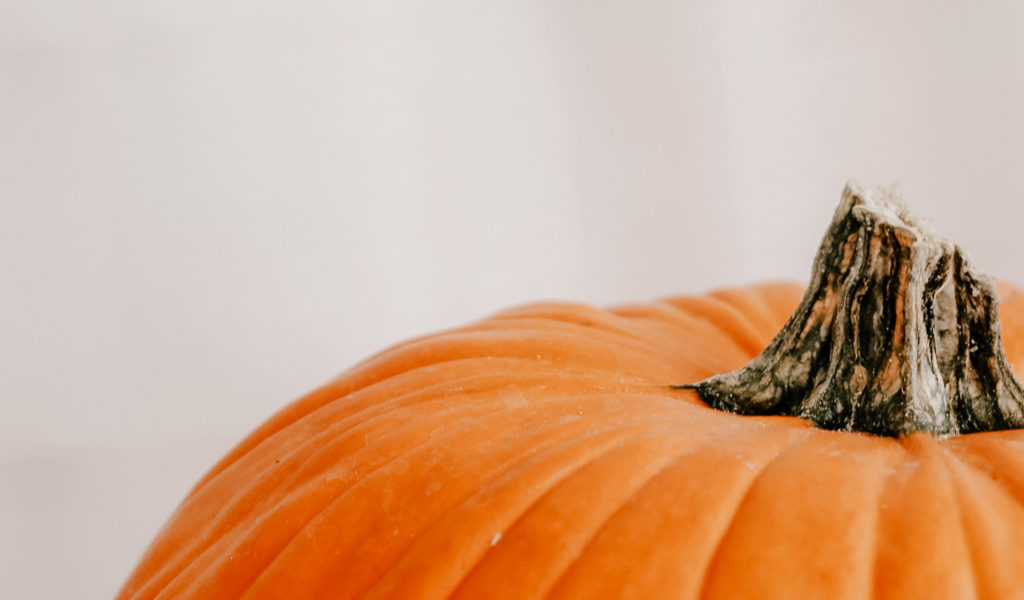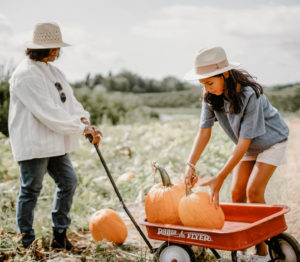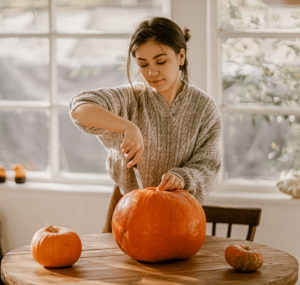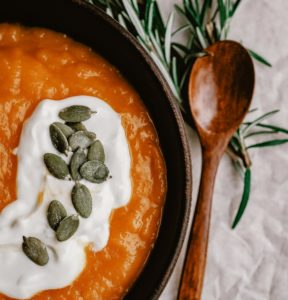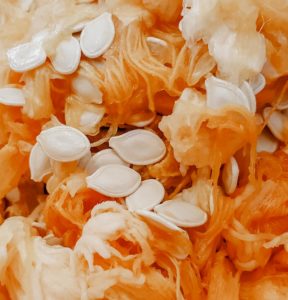For many Americans, Halloween is a high point of the year, unfortunately however, it’s also a holiday that produces a huge amount of waste, leaving behind candy-wrappers, single-use decorations, and disposable costumes by the ton.
Pumpkins make up a large part of this waste, and the World Economic Forum estimates that United States produces around 990,000 US tons of pumpkin every year; almost all of which is thrown away after Halloween and Thanksgiving.
When pumpkins are sent to landfill, they are not given the opportunity to break down into the soil as they would with composting. As a result, they produce the greenhouse gas methane. This gas is 25 times more effective at trapping heat in our atmosphere than carbon dioxide making it huge red flag for climate change.
Our pumpkin waste also comes at a huge opportunity cost. Pumpkins are high in nutritional value, and delicious! If the US is producing almost 990,000 tons of pumpkin every year, and most families throw their pumpkins away, then the scale of food waste is quite phenomenal for a single day of celebration.
Our national pumpkin waste also demonstrates a wide-spread acceptance of wasteful open-loop systems. Open-loop systems are found when our production, consumption and disposal are linear. In other words, they are found when we take resources from the earth, use them, and discard them without reusing the surplus energy and materials. These open-loop systems drain our natural ecosystems of their resources, create pollution, and are inherently unsustainable.
Learning how to reuse or recycle our pumpkins, and putting them to productive use even as they decay is an excellent example of how we can close these loops. In the process, we can align ourselves with zero-waste principles, creating more robust ecologies, economies, and communities.
Your Pumpkin and Zero Waste
Given that our pumpkins are often bought, left to wilt carved or uncarved, and then discarded to release methane in landfill, they currently don’t fit into your zero-waste lifestyle. The pumpkin is barely used, let alone reused. The food and seeds they contain are left to decay, and then they break down to discharge gases into the air which accelerate climate change.
In order to reduce these risks, we need to think more closely about the life cycle of pumpkins as a product, and work to integrate pumpkin growth, use and disposal into closed-loop systems.
In the case of our pumpkin problem, we need to think about how we can grow our pumpkins using waste, and how we can then use the grown pumpkins to meet other needs in our local communities, ecologies, and businesses. Here we look at number of ways that the pumpkin loop can be closed, at home, in your neighbourhood, and even in collaboration with local authorities!
Recycling Pumpkins at Home
Organic pumpkins
A great way to ensure that jack-o-lanterns are “closed loop” is to buy pumpkins from local organic farms. These pumpkins are grown using compost made from organic waste material, rather than imported artificial fertiliser. This is an easy and effective way to support closed-loop pumpkin production.
Equally, you can wash, dry and store pumpkin seeds. These can then be planted in April and fed with home-made compost. With your own pumpkin patch, you’ll be able to spook yourself, feed yourself, and create a source for organic waste disposal all at the same time! You could even share excess seeds with your neighbours and create a self-sufficient source of production for food and Halloween decorations!
Eat your pumpkin!
It goes without saying that pumpkins are delicious, not to mention packed with health benefits. There are many ways to cook with pumpkin, and you can even use scraggly leftovers from carving. By chopping these leftovers up, or blending them into a paste, they can make a delicious additive to soups and stews, adding thickness and heaps of flavour.
You can also roast your pumpkin seeds to make a tasty snack. Roasted pumpkin seeds are a tasty, healthy alternative to other snack foods, and divert waste from landfill.
Pumpkin Compost!
Whilst it’s best to eat or otherwise utilise your pumpkins, they can also be composted. By chopping your jack-o-lantern up into small pieces and adding it to your compost heap, you’re allowing the pumpkin’s stored energy to be re-released into the soil, and utilised to grow new fruits and veggies.
If you don’t have a compost pile, then don’t worry! Pumpkins create issues when they break down in landfill, but this is only because they don’t have access to oxygen and other components of healthy soil. If you can cut your pumpkin and either bury or scatter the pieces in a natural space, then they will find their way back into the local ecosystem.
However, a word of caution; if you are going to leave your cut pumpkin unburied, be sure that you are far away from residential properties. Your pumpkin will likely attract a lot of hungry wildlife!
Pumpkin Recycling Near Me
If you find yourself without the time or space to try any of these options, many states across the US offer a range of services to help you compost your pumpkins! These are only a few of many similar services. For more specific information contact your local recycling and composting services.
Boulder, Colorado: Charm is the local Centre for Hard to Recycle Materials, and will happily take pumpkins as part of their standard composting scheme.
Middletown, Connecticut: Featuring advice on what to do with your old jack-o-lanterns information on your local recycling centre that will take your rotting pumpkins.
Boston, Massachusetts: Boston has public compost bins found around the city as part of Project Oscar. Make sure to cut your pumpkin up into small pieces so that more can fit in!
Also, the City of Boston subsidises personal compost bins for Boston residents if you want to start making your own at home!
New York City, New York: Pumpkin Smash: Sunday November 7th. The Pumpkin Smash is a family favourite. Not only does it offer families the chance to redirect their waste into compost, but also to have great fun. This is the chance to smash your pumpkin into the smallest pieces possible with a bat, hammer, or shovel, and to then learn how it’s turned into compost.
Philadelphia, Pennsylvania: Circle Compost offers pumpkin collection from your door for $4.00 per pumpkin. Equally, if you sign up to become a regular customer with Circle Compost, who will collect your food scraps, they will pick up your pumpkin for free!
Illinois (across the state): More Pumpkin Smash events : Saturday 6th November, offering the opportunity for residents to redirect their pumpkins, and have them directed to local compost production. Check out the website to find your local event in Illinois.
There are lots of ways for us to reuse and recycle our pumpkins, so take action now and avoid being we haunted by the ghosts of pumpkins past. For more information on how to carry on your zero-waste journey throughout the year, subscribe to the zero waste blog, or checkout the store to get started at home.

